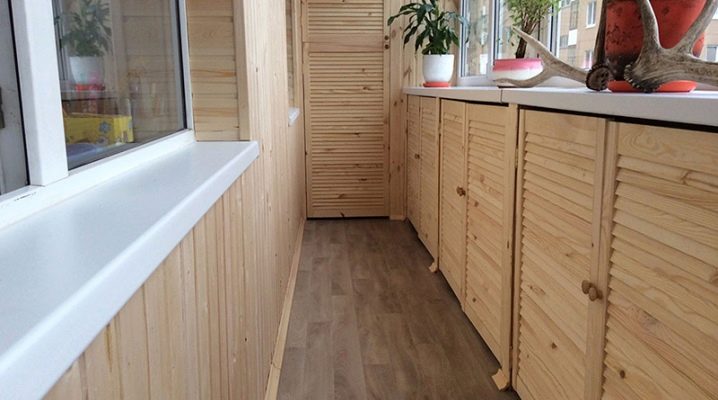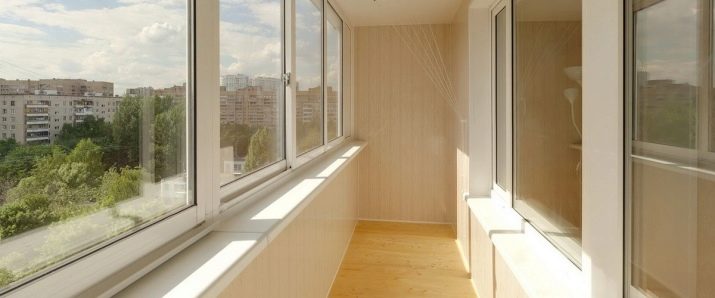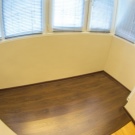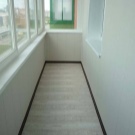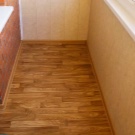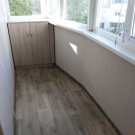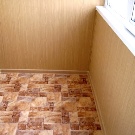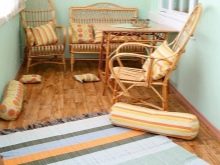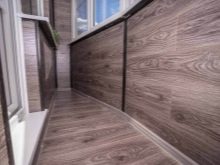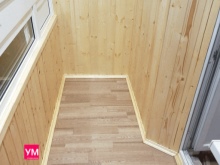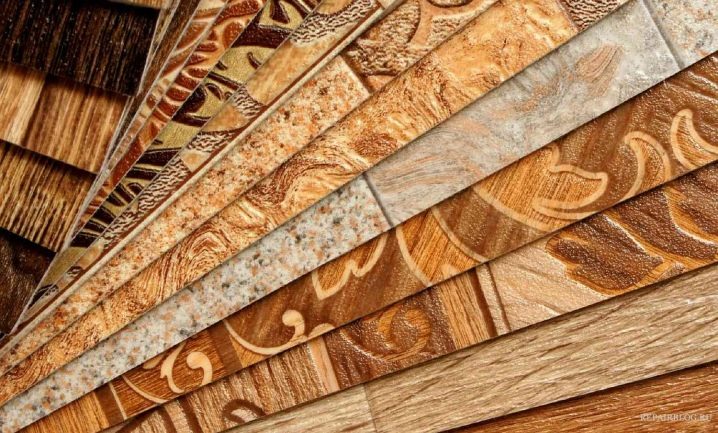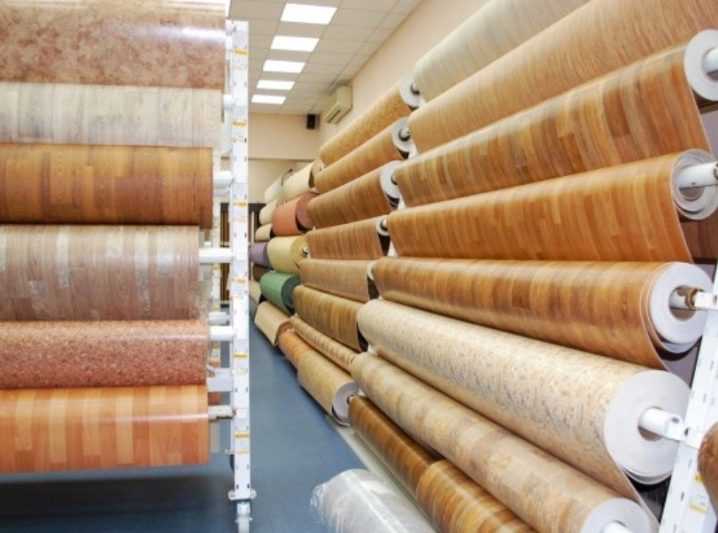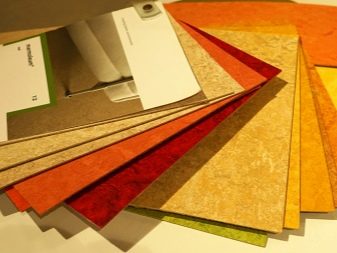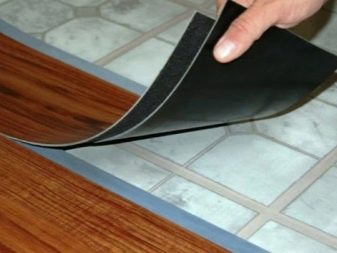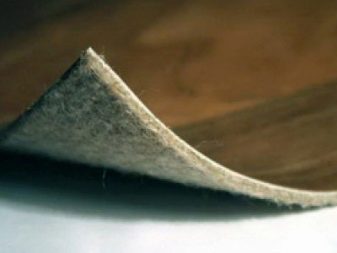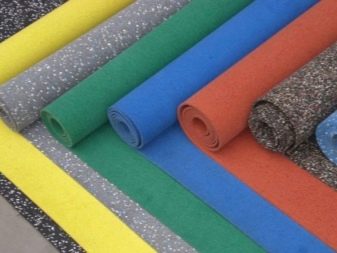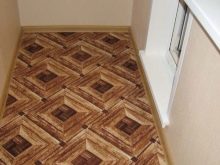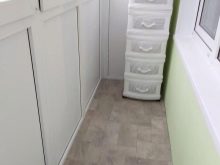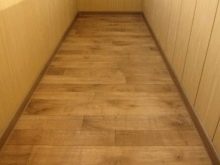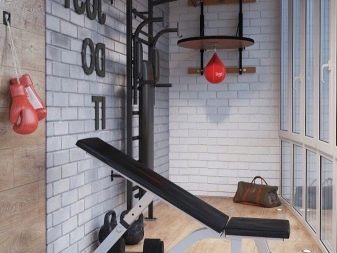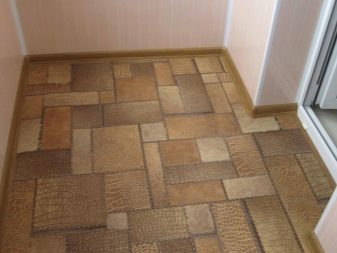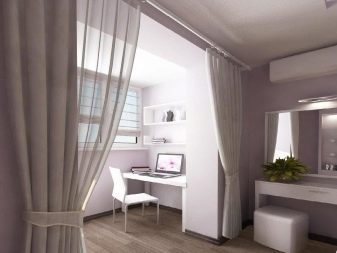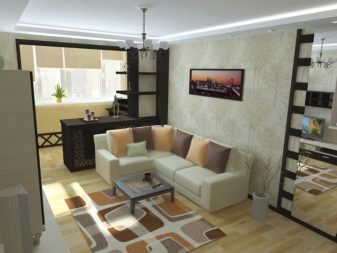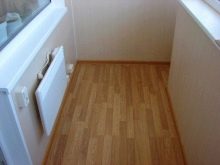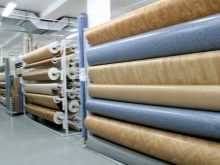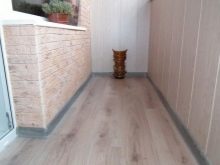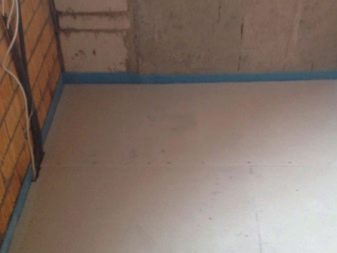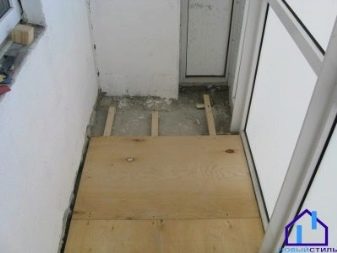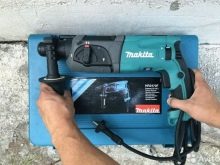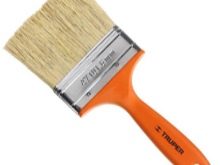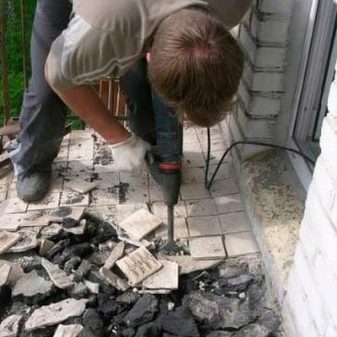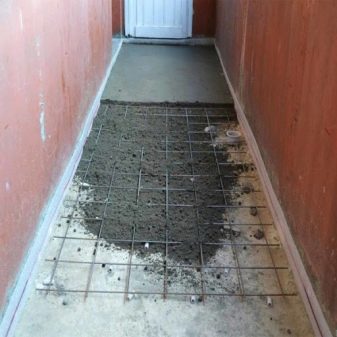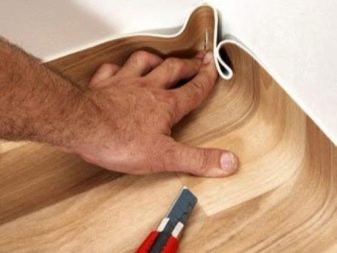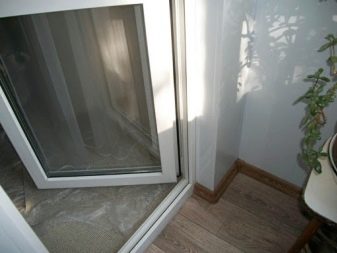The choice of linoleum on the balcony and its installation
The decision to lay linoleum on the balcony allows you to quickly and inexpensively give this room an aesthetic appearance. Such a floor covering is undemanding in maintenance, practical, suitable for rooms with different types of finishes. It will be useful to learn about what types there are, how best to choose and lay frost-resistant linoleum on a loggia without heating, anyone who is thinking about improving the balcony space.
Views
The balcony floor must be durable, easy to clean, practical to use and safe. Finding the right material for such a room is quite difficult. The tiles are slippery, the boards quickly deteriorate.
A compromise solution can be the flooring on the balcony of linoleum - an elastic and flexible roll covering, suitable for both glazed and open spaces.
The classification of this material divides all its types by purpose. There are several options.
- Domestic. The most susceptible to wear, with a soft and pliable structure, with a service life of 2 to 5 years.
- Semi-commercial. More dense and thicker. Withstands up to 20 years of operation.
- Commercial. The most durable, painted in thickness, with anti-slip components.
And also all types of linoleum can be divided into frost-resistant and ordinary. The first ones contain specialized plasticizing additives, which allow maintaining the elasticity of the material even at low temperatures, and anti-slip components. Regular linoleum does not have such additives.
Linoleum is also classified according to the material used to make it.
- Marmoleum. It is made from natural raw materials, with a base of jute, hemp, flax, covered with a mixture of wood components, linseed oil and resin. This is a rather expensive coating, environmentally friendly, but does not tolerate temperature extremes.
- PVC. It is a synthetic material with a textile or non-woven base, polymer coating. It is resistant to most types of damage, and is available in conventional and frost-resistant versions.
- Alkyd or glyphthalic. Moisture resistant material based on synthetic resins.
- Relin. This is rubber-based linoleum, it consists of rubber with the addition of bitumen. Suitable for open balconies only.
- Made of nitrocellulose. Highly flammable material, elastic and moisture resistant. Not suitable for outdoor use.
Design
When decorating a balcony space, it is customary to use linoleum with classic textures and patterns. The usual version of the decorative coating that imitates parquet or plank looks good here. It is better to choose light colors, with gray, pink details.
For unglazed balconies, types of linoleum with an abstract variegated pattern are well suited. They are less visible pollution, defects arising during operation.
In small areas, it is better to avoid large patterns and strict geometry. A good solution can be a monochromatic linoleum with or without small inclusions. It is suitable for a room converted into a gym or ironing room, dressing room.
Small tile ornament is a good solution for decorating balconies as a recreation area. It can be used on all or part of the floor.
When combining a balcony with other rooms, it is worth using coatings with the same pattern. In this case, there will be no tearing effect. The interior will be perceived as more integral, look harmonious.
How to choose?
Linoleum for the floor on the loggia or balcony must be selected taking into account the conditions of its operation. In an open space, roll material is exposed to various atmospheric factors. On a cold balcony without heating, coverings are laid that can withstand the most intensive use in open space.
It is worth noting a number of factors that have to be considered when choosing.
- The presence or absence of a heat-insulating substrate. It is not required if installation on concrete is to be done. Here it is better to give preference to linoleum without a base. A subfloor can be mounted on top of a wooden sub-floor.
- Frost resistance. The highest characteristics are possessed by single-layer PVC coatings. When choosing multilayer materials with a foam base and a glass fiber gasket, you need to pay attention to what temperature range they can be used in. Most options are not designed to withstand severe frost.
- The presence of glazing. Closed balconies, even unheated ones, can be covered with a smooth covering. In this case, the adhesion to the sole of the shoe is not so important. On non-glazed balconies, the choice should be made in favor of a rough roll coating, sufficiently embossed, containing anti-slip particles.
- Workmanship. The presence of exfoliating particles, irregularities, spots, distortion of the pattern are signs of a factory defect. The material produced in violation of quality requirements, with all the cheapness, will not last long.
- Coverage class. According to the degree of abrasion resistance, commercial and semi-commercial options are suitable for operation on the balcony. They are distinguished by a high level of reliability, tolerate temperature extremes and contact with dirt well. Household-grade linoleum is not very suitable for these purposes.
- Base material. For balconies, rubber or PVC is best. Glyphthal varieties are suitable exclusively for insulated balconies, provide good sound insulation, but are susceptible to stretching. Natural materials are expensive and demanding on operating conditions. The cheap colloxylin version is also not suitable for rooms without heating.
Considering the basic recommendations, you can easily choose the right linoleum for the balcony - heated or cold.
How to make a bed?
Putting linoleum on the balcony with your own hands is quite within the power of every home craftsman. Its installation is carried out using a simple set of tools and accessories. Laying should be done exclusively on a flat surface - chipboard or cement screed.
Wood boards are necessary if you want to lay linoleum on a plank subfloor. When laying on a screed, a preliminary priming of the surface is necessary, which increases its adhesion characteristics.
To work with roll coating, you will need a set of tools:
- construction knife with a slanting edge;
- roulette;
- roller, putty knife or paint brush;
- perforator for concrete;
- marker for marking.
If there is an old coating on the balcony, it is first dismantled. The floor is freed from dirt, dust, traces of construction debris. The concrete screed is primed with a roller or brush.
In the presence of a large number of defects, a new screed can be formed. The prepared surface after priming is left for 1-2 days.
Let's take a look at the steps of laying linoleum on a flat subfloor made of chipboard, plywood or concrete.
- The coverage area is measured.
- A piece of linoleum of the required length and width is cut out. For cutting, you will need a flat, flat surface and a construction knife. You can also use scissors for metal.
- An adhesive is applied to the base. Depending on the density, it is distributed with a brush or spatula.
- Linoleum is applied to the surface, pressed tightly.It is optimal if a weight is used that allows for uniform pressure, but you can do without it.
- After 3-4 days, depending on the brand of glue, the floor is ready for further use. Skirting boards can be fixed around the perimeter - on the mounting plate, using a hammer drill and anchors. In the skirting board, you will first have to drill holes to drain moisture.
If the linoleum rises, bubbles up after laying, this is normal. It takes time for him to adapt to the conditions. After a day, the coating will lie flat, it can be fixed with glue or other clamps on a permanent basis.
The following video will tell you how to lay linoleum on the balcony.
